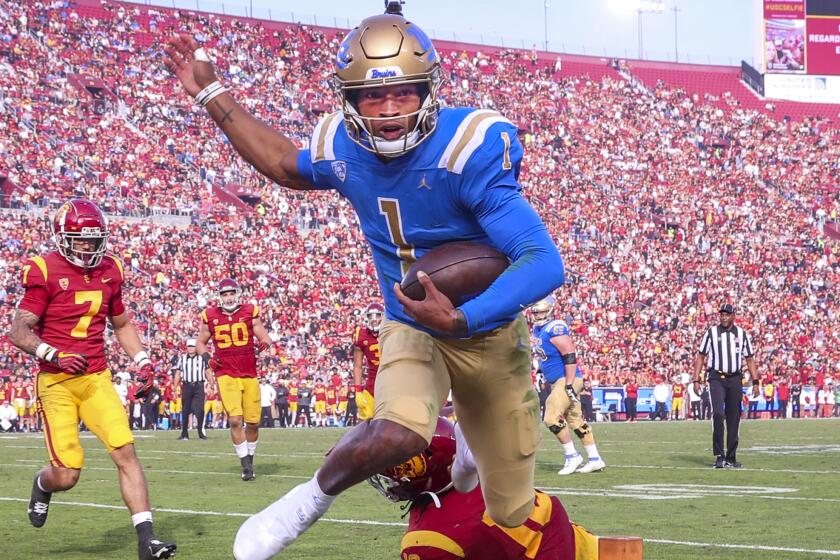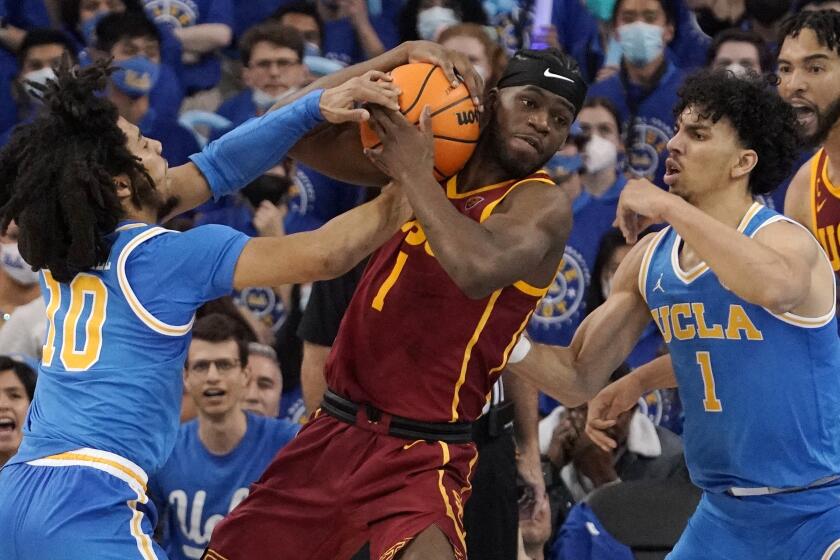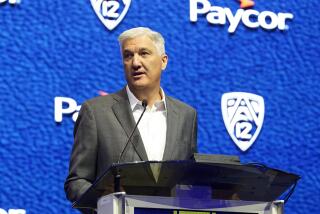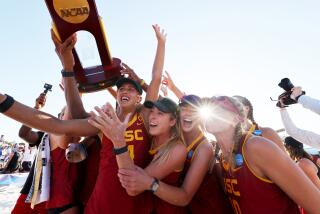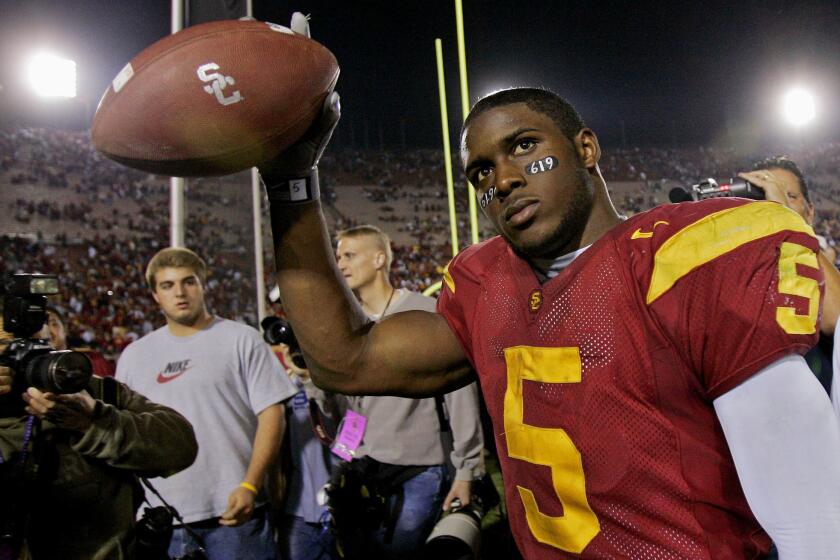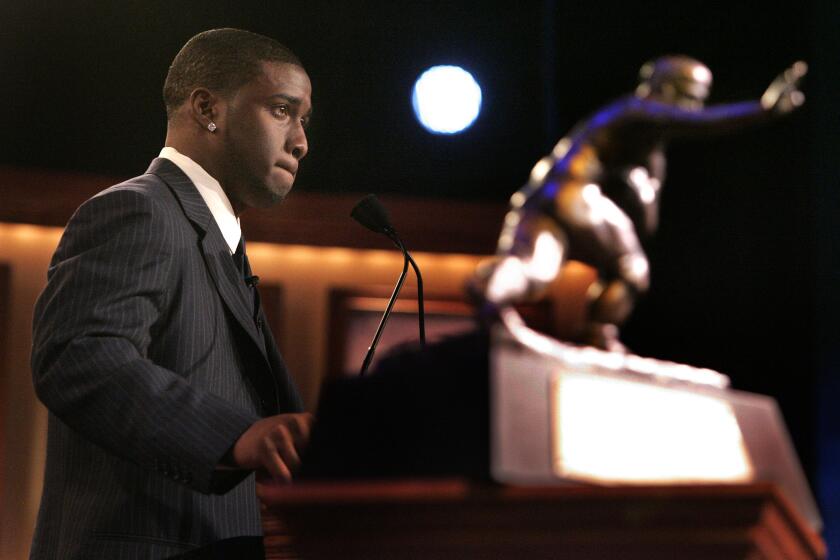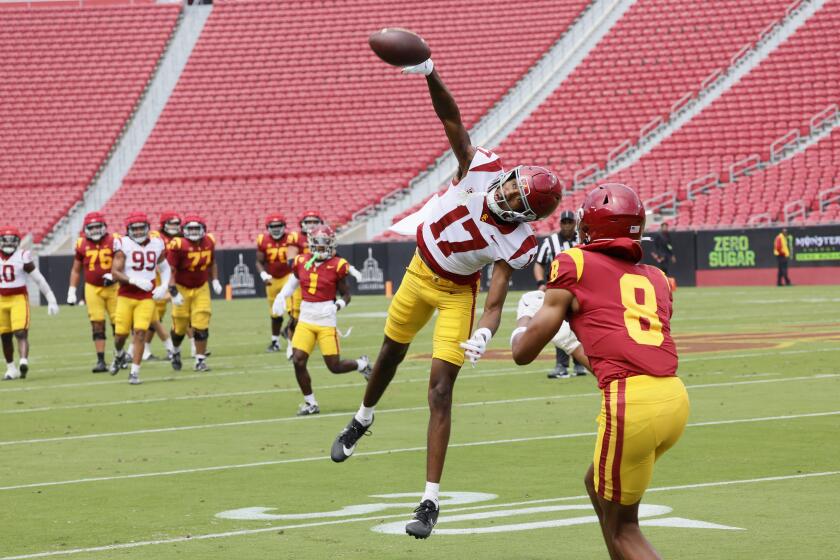USC athletic director Mike Bohn has a history of punching first in realignment fights
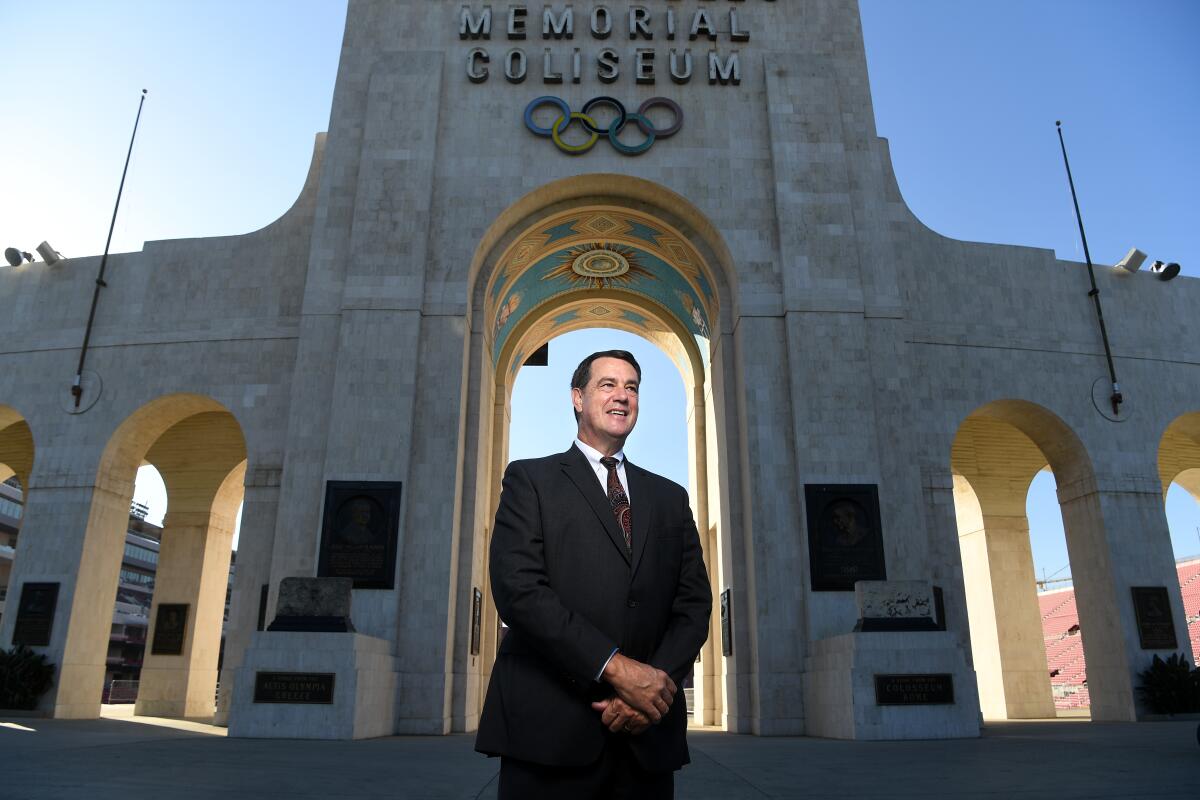
It was perhaps the most uncertain stretch in the history of college athletics. Chaos reigned amid rumors of realignment. A blue-blood program was threatening to abandon its conference over TV money. Another conference commissioner was openly courting that blue blood with the intent of building a super conference. At any moment it seemed one domino could fall, irreparably altering the landscape.
The unrest left Mike Bohn in a precarious position. As Colorado’s athletic director in June 2010, at the height of conference realignment drama, Bohn was wary of where the Big 12 was headed. Texas, determined to launch its own network, was flirting with the possibility of leaving for the Pac-12. The Pac-12 was flirting back. Rumors flew about Oklahoma, Oklahoma State, Texas A&M and Texas Tech bolting alongside the Longhorns, a move that would assuredly mark the end of the conference.
“Had the Big 12 fallen apart, Colorado would’ve been screwed,” says Chuck Neinas, Bohn’s mentor and a former interim commissioner with the Big 12. “They would’ve been in the Mountain West.”
Bohn didn’t want to risk Colorado being left behind. So he made the first move, spearheading efforts for Colorado to join what would soon become the Pac-12. One of his contingencies? That the conference assure Colorado was in the same division as USC and UCLA, which Bohn knew had a serious reach in his state.
USC and UCLA are leaving the Pac-12 for the Big Ten, a shift that will move college football’s ‘Power Five’ closer to a ‘Power Two.’
At the time, then-Pac-12 Commissioner Larry Scott thanked Colorado for its “courage” in taking the first step in what seemed then would be a lengthy realignment saga. But Texas ultimately decided to stand pat, with the conference adding only Colorado and Utah.
Twelve years later, with the conference still reeling from Scott’s inability to land Texas, Bohn would again take a bold first step, this time helping lead USC along with UCLA out of the Pac-12, where they had been flagship members for more than a century, and into the Big Ten, where a windfall of new media rights revenue awaits.
Except this time, as USC’s athletic director, the move could have major implications across all of college sports. Those existential concerns start with the potential demise of the Pac-12 as a Power Five conference as the Big Ten and SEC emerge as a formidable “Power Two.”

Not that the Pac-12 was in an ideal place before the exit by USC and UCLA.
“They were concerned about the Pac-12, the television marketplace,” Neinas said. “It can’t compare to what they’re going to get as a result of going to the Big Ten. It’s one thing if it was a few dollars more, but two, three times more, you can’t pass that up.”
The prospect of adding the nation’s second-biggest market to the Big Ten was sure to command attention of television networks.
With players being paid, universities have to follow the money, and UCLA and USC are making a smart move by leaving the Pac-12 for the Big Ten Conference.
“I believe that Fox was probably the matchmaker in this,” Neinas said of the television network. “This obviously serves to improve their investment, so to speak, because USC and UCLA and the Los Angeles market bring a lot of value to the Big Ten package. I know that it’s difficult for both institutions to leave their long-established history in the Pac-12, but unfortunately, let’s face it, television is dictating what’s happening in college athletics.”
Bohn assured that the move was “about way more than resources,” but he saw the handwriting on the wall when Texas and Oklahoma announced last summer that they were leaving the Big 12 — for real, this time — for the Southeastern Conference.
“I don’t believe there’s a college administrator in the country that didn’t recognize that clearly there were two conferences that were separating themselves from everyone else,” Bohn told The Times. “That particular move further emphasized that.”
USC leaders worked to secure a seat at the table, where they could help dictate where realignment heads from here.
In past stops, Bohn didn’t always have that luxury.
Local high school recruits react with shock to UCLA and USC leaving the Pac-12 for the Big Ten.
When Bohn was the athletic director at Idaho and the Big West stopped playing football in 2000, he hoped to usher his school into the Western Athletic Conference. But the Vandals were passed up and left to join the far-flung Sun Belt. A few years later, Bohn left.
At Cincinnati, Bohn was also once rebuffed in realignment talks. The Bearcats were viewed as a top candidate to join the Big 12 in 2016, until the conference voted not to expand.
Rejected by the conference he once left, Bohn and his chief of staff, Brandon Sosna, reset their plans for about six years down the line, when they believed major realignment was inevitable amid an influx of new media rights deals.
Cincinnati would ultimately beat that timeline, accepting an invite to the Big 12 last September.
By then, Bohn was off to USC, where, for the fourth time, he would help usher a school from one conference to another.
More to Read
Go beyond the scoreboard
Get the latest on L.A.'s teams in the daily Sports Report newsletter.
You may occasionally receive promotional content from the Los Angeles Times.

